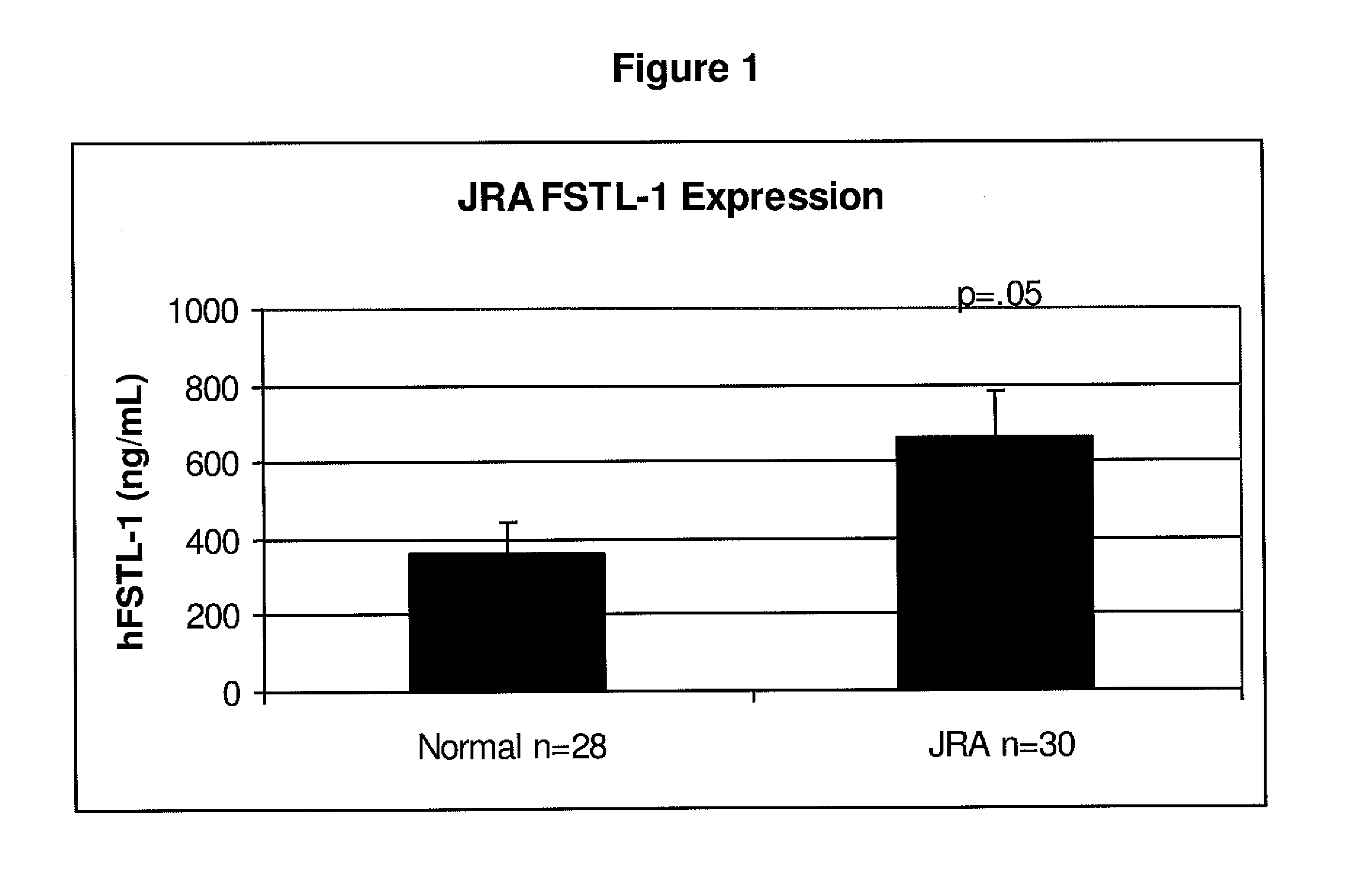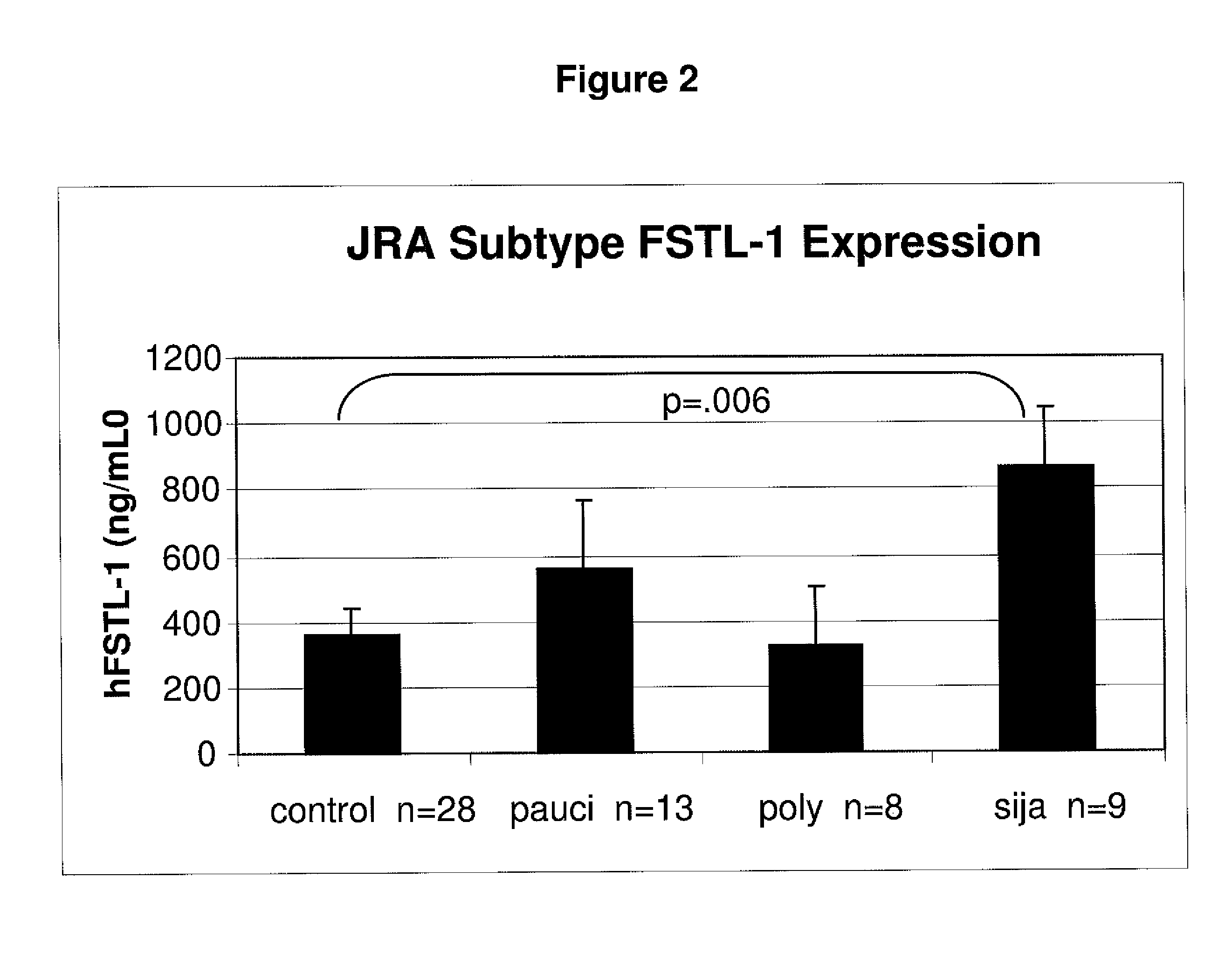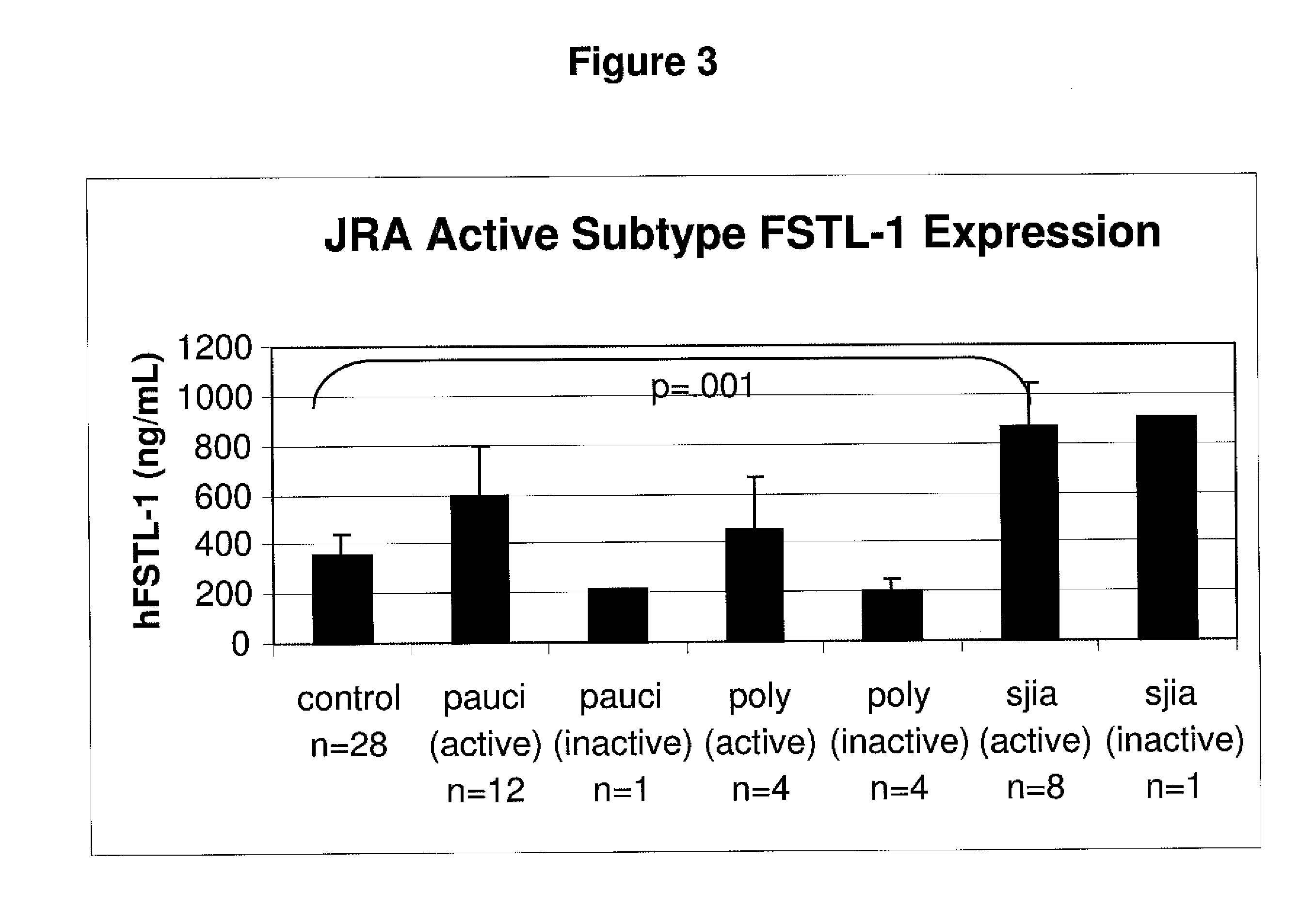Fstl-1 as a biomaker of inflammation
a biomarker and inflammation technology, applied in the field of follistatinlike protein1, can solve the problems of serious complications, no single test or biomarker can be used to diagnose jra and its disease severity, and tests that do not provide accurate correlations with disease severity
- Summary
- Abstract
- Description
- Claims
- Application Information
AI Technical Summary
Problems solved by technology
Method used
Image
Examples
example 1
Assessing FTSL-1 Protein Levels
[0086]Assessing the protein levels of either mouse FSTL-1 (mFSTL-1) or human FSTL-1 (hFSTL-1) by ELISA was accomplished using the following materials and methods:
[0087]Solutions: Coating Buffer—PBS pH 7.4; Blocking Buffer—PBS with 1% BSA, 5% sucrose, and 0.05% Tween 20; Diluent—TBS pH 7.3 (20nM Tris, 150 mM NaCl) with 0.1% BSA, 0.05% Tween 20; and Wash Buffer—PBS 0.05%, Tween-20.
[0088]Plate: Catalog #468667 or 434797 from Nunc Immunomodule, MaxiSorp™ F8 framed.
[0089]1. Coating→Coat the plate with 2 μg / ml of polyclonal goat anti-human FSTL-1 at 100 μl / well (R&D #AF 1694=0.1 mg / ml) or polyclonal goat anti-mouse FSTL-1 (R&D #AF 1738) at 4° C. overnight (20 μl+1 ml of PBS).
[0090]2. Wash three times with Wash Buffer.
[0091]3. Block the plate with 300 μl / well of blocking buffer at least 1 hour at room temperature.
[0092]4. Wash three times with Wash Buffer.
[0093]5. Sample loading Load samples or bacterially purified human FSTL-1 100 μl / well (diluted with Dilue...
example 2
Assessing Disease Severity for Juvenile Rheumatoid Arthritis (JRA)
[0101]The serum from children either with or without JRA were analyzed to determine the correlation between FSTL-1 protein levels and disease severity. Using the protocol above, FSTL-1 protein levels were determined for 28 normal children (i.e., children without JRA) and 31 children with JRA. As shown in FIG. 1, FSTL-1 levels were significantly higher (p=0.5) than in the normal children. The mean level of FSTL-1 protein for children with JRA was about 650 ng / ml and for normal children, it was below about 400 ng / ml. As a biomarker for disease severity, the expression of FSTL-1 was significantly higher (p=0.006) in children with systemic rheumatoid arthritis. This is shown in FIG. 2 where the mean levels of FSTL-1 expression were more than about 800 ng / ml for children with the most severe form of JRA. In contrast, children with the less severe forms of JRA, pauciarticular arthritis and polyarticular arthritis, expressed...
example 3
FSTL-1 as a Biomarker for Active States of JRA
[0102]The sera from 28 normal children and from children with different forms of JRA in active or inactive states were analyzed for levels of FSTL-1 using the protocol described in Example 1. The results are shown in FIG. 3. The highest levels (e.g., >800 ng / ml) were seen in the children with the most severe form of JRA, regardless of whether the JRA was active or inactive (as defined by the presence or absence of symptoms, respectfully). In contrast, the status of pauciarticular arthritis and polyarticular arthritis was reflected in the levels of FSTL-1 detected. The sera from children with the active form of both types of JRA contained moderate levels of FSTL-1 whereas the serum from children with inactive form of pauciarticular arthritis and polyarticular arthritis were low, about the same level as normal children.
PUM
| Property | Measurement | Unit |
|---|---|---|
| concentration | aaaaa | aaaaa |
| swelling | aaaaa | aaaaa |
| stiffness | aaaaa | aaaaa |
Abstract
Description
Claims
Application Information
 Login to View More
Login to View More - R&D
- Intellectual Property
- Life Sciences
- Materials
- Tech Scout
- Unparalleled Data Quality
- Higher Quality Content
- 60% Fewer Hallucinations
Browse by: Latest US Patents, China's latest patents, Technical Efficacy Thesaurus, Application Domain, Technology Topic, Popular Technical Reports.
© 2025 PatSnap. All rights reserved.Legal|Privacy policy|Modern Slavery Act Transparency Statement|Sitemap|About US| Contact US: help@patsnap.com



